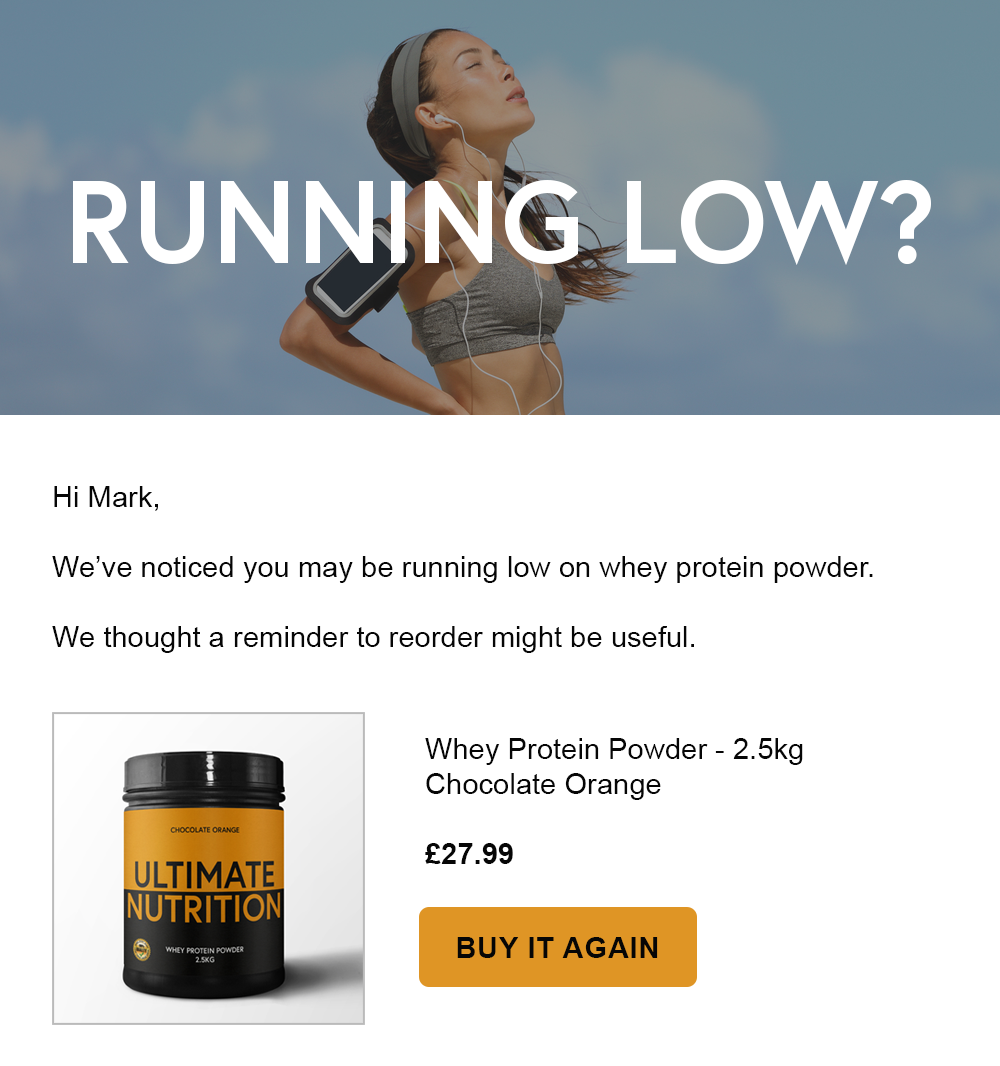Personalisation – it’s about more than inserting someone’s name into your emails.
In fact, only adding your subscriber’s name into a campaign isn’t just an uninspiring way to personalise – it’s actually bad for business. Our research found that 92 percent of consumers are unlikely to engage with marketing that addresses them by name.
However this doesn’t mean email personalisation isn’t worth doing – it’s just that the tactics you use need to be a bit more sophisticated than they might have been in the past. There are a whole host of new ways to personalise your approach and boost your transaction rates by up to six times – some marketers using personalised emails are achieving open rates of 18.8% compared to 13.1% for unpersonalised messages.
We take a look at 10 ways to take email personalisation beyond first name. We’ll show you what’s possible and tell you how you can deliver next-level email personalisation yourself.
1. Personalised subject line
There’s so much more that can be used to personalise a subject line than the recipient’s name! Using their location, referencing their browsing and buying history or demographics will all grab their attention. This will stand out much more than only using their name which is always overused in the inbox!
2. Personalised product recommendations
There’s no better way to make your campaigns relevant to the recipient than personalising your content. For a retailer is this often means featuring personalised product recommendations. Our personalisation platform, PureTargeting, lets you base recommendations on buying and browsing history. PureTargeting uses machine learning to understand the buying behaviour and preferences of each customer and then present right recommendations. The chances are no two customers will ever see the same exact product recommendations!
3. Personalised post-purchase emails
A great way to improve the post-purchase experience is by sending them emails that are relevant to what they just bought. You can feature cross-sells by suggesting products that complement their most recent purchase. You can even offer useful advice, video demonstrations or tips on how to get the most from their shiny new product.
4. Personalised cart abandonment emails
Most retailers have cart abandonment emails set up but some are still failing to personalise them. You can easily do this by inserting the name of the product they just abandoned in the subject line to grab their attention quickly. You can even feature suggestions for alternatives or upsells that you think they might like better!
5. Personalised browse and abandonment emails
Automated browse and abandonment emails let you reach out to customers who’ve simply viewed a product on your website. It’s easy to personalise these emails further by telling them how much stock you have left of the item they just browsed. You can even trigger personal alerts telling them when a sold out item they viewed is back in stock.
6. Real-time content
Did you know it’s possible to populate the content of an email based on when its opened? It means no more missed promotions or old news because the email will automatically feature the most recent content! It’s a smart way of ensuring your emails are always up to date no matter when the recipient opens them. This is vital for an events companies who want to ensure they’re only promoting upcoming events.
7. Personalised promotions
One of the most savvy uses of personalisation is when it comes to promotions. Personalisation promotions are based on the customer’s browsing history, individual spending patterns and even whether they’re a loyal or lapsed. Personalising promotions is an easy way to boost your conversion rates and make sure your offers are always relevant.
8. Replenishment and renewal
Everyone likes the personal touch when it comes to customer service. It’s exactly the reason you should be reaching out to people personally when you think they’re running out of their favourite product. And if you’re a subscription-based business you can send customers a personal reminder when they need to renew.

9. Ratings and review requests
Taking a personal interest in someone’s experience counts. That’s why sending a request for a personal review is so important. And they’re popular – emails with the word ‘review’ in the subject line boost open rates by 28% or more!
10. Personalised send times
It’s not just what you put in an email that personalises it – it’s also when you send it. It’s easy to make your email send times more relevant byour Intelligent Timed Sending feature. Intelligent TImed Sending analyses the times when individuals have previously opened and engaged with emails. It lets you personalise the send times of your campaigns so they arrive when the recipient is most likely to engage. It’s a great feature that uses the power of personalisation optimise your engagement and open rates!
Takeaway
So there you go – 10 ways to personalise emails beyond first name.
Personalisation can have a transformative impact on your email marketing results. It will help you stand out in the inbox, increase open and click-through rates, and drive more revenue from email marketing.
If you’re looking to take your email personalisation strategy forward, our technology can help. Learn how PureTargeting helps marketers deliver incredible results with personalisation.
If you want to learn more, be sure to read our report ‘Email Personalisation Report‘. Benchmark your current email personalisation strategy and get advice from leading experts in the email marketing industry.

